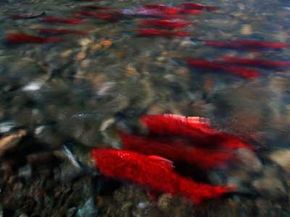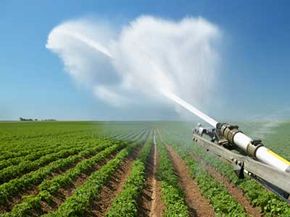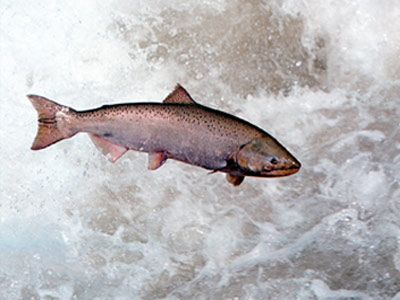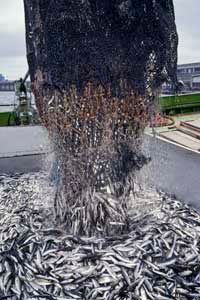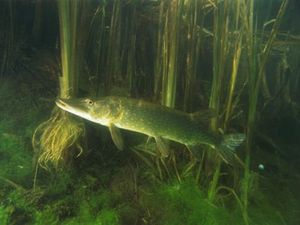The biggest threat today to freshwater ecosystems is agriculture. Agriculture is the raising of crops and livestock for food. Obviously, we can't stop farming -- we have to farm to eat and we have to eat to survive. But unfortunately this vital institution hurts our freshwater systems. How?
Freshwater is a renewable resource -- through precipitation -- but it's not unlimited. If human consumption outpaces natural restoration, the quality and quantity of remaining freshwater sources suffers. Agriculture accounts for a whopping 70 percent of our freshwater use. Crops like rice, cotton and sugar are particularly thirsty and need a lot of water to grow. For example, it can take up to 1,300 gallons (5,000 liters) of water to grow just 2.2 pounds (1 kilo) of rice. To give you a sense of how much water that requires worldwide, the 2008 forecast for world rice production was 434.3 million tons (394 million metric tons) [source: USDA].
Water is indispensable for farming. But many countries grow crops that are unsuitable for the local climate and soil, often because government subsidies make growing those crops profitable. When overproduction occurs, the soil salinity (saltiness) increases and it becomes more difficult to grow hardy crops and raise cattle. In turn, farmers start using pesticides and chemicals to help their crops grow. The pesticide chemicals then wash into the remaining water sources, destroying freshwater habitats and the species that live there. In fact, the polluted runoff can wash all the way to the coast and even begin to affect the marine ecosystem.
Another major threat to freshwater ecosystems is the construction of dams, which are used in part for irrigating crops. Dams allow us to store water in a reservoir during a wet season and then release it as needed during a dry season. However, dams also divert water flow patterns, which affects the habitats of local birds and fish and can obstruct fish migration, reducing spawning. Dams and flow diversion disrupt natural flooding cycles, reduce water flow, drain wetlands, increase flood risk and threaten species.
The agriculture industry's poor drainage and irrigation systems also squander precious water. The World Wildlife Fund estimates that only 20 to 50 percent of water extracted for farming actually reaches the crops [source: WWF]. With traditional flood irrigation systems, farmers pump or manually bring water to the fields where it simply flows through the crop area. If the fields aren't flat, water ends up pooling in the lower areas and misses the higher areas altogether. Switching to a more efficient method of irrigation could save water -- a good thing for freshwater habitats that are being sucked dry. For example, drip irrigation is a much more controlled method of watering, where water slowly trickles from feeder hoses to very specific areas.
There are other ways to minimize impact as well. Planting trees for shade and windbreak can help increase water retention in soil. In addition, adding plant waste to the soil increases its organic content and helps it use water more efficiently. Growing crops that are better suited to the soil and climate of a specific location is also critically important. For example, the Niger River basin in Africa grows rice during the dry season. This results in increased water needs. Growing wheat in the same area requires 20 to 40 percent less water.
With the right strategies, perhaps freshwater habitats and their species can be preserved. For more information on green topics, visit the links on the next page.
